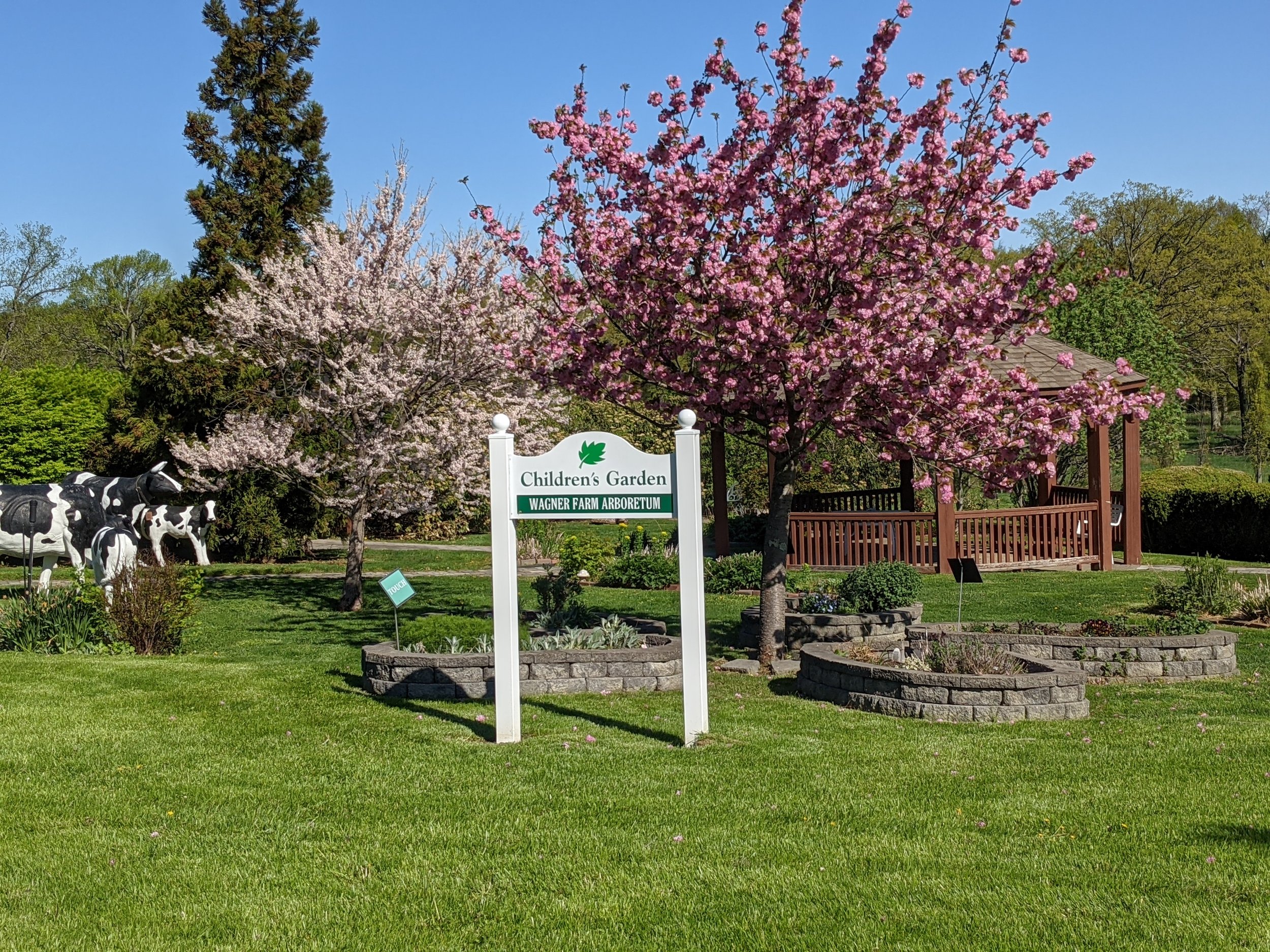Children’s Garden
The Children’s Garden History and Improvements
On May 16th, 2009 the Children’s Garden was opened to the public.
The garden is an organic green space where people can experience a connection with nature in an area that features pollinator and butterfly beds, an oak tree allee, colorful hedges and shrubs, a boxwood maze, life-sized make-believe cow sculptures, outdoor musical instruments, a gazebo, sensory garden, birdhouses and plenty of space for children to explore. The garden consists of mostly native plants from which people of all ages may learn of their beauty and benefit to the ecosystem.
The Children’s Garden has been the recipient of Scout projects that includes the establishment of two beautiful Purple Martin birdhouses by Eagle Scout, Tyler Eng, benches installed next to the musical instruments by Eagle Scout, Elliott Baratta, and a blueberry patch planted in raised beds by Andrew Cantone and fellow Boy Scouts of Troop 228 Warren.
The Children’s Garden added outdoor, weather-resistant musical instruments in 2021. This purchase was made possible by a private donation from the Kay Collier Foundation in honor of Karen Manner, recent past president of the Arboretum and volunteer since 2004. The instruments are perfectly tuned sound sculptures that are durable and play real music. They are a wonderful auditory experience for children, letting them have fun in an outdoor setting while acquiring skills in listening, music, rhythm, interaction, improvisation, cooperation, sharing, patience and confidence building.
Please Note
The Children’s Garden is open from dawn to dusk during the entire year so that the beauty of nature can be enjoyed during all seasons. The grounds are maintained entirely by volunteers.
Please respect the following:
NO smoking
NO alcoholic beverages.
Leave your pets at home. Service animals only are allowed onto the site, consistent with The Americans with Disabilities Act.
Keep Children under 12 years old under adult supervision at all times.
“Please take nothing but pictures, leave nothing but footprints.” Do NOT leave any garbage, cans, or plastics. There are no trash bins in the garden because this attracts animals.
You can enter via the newly installed single door gates, or the double wide gates. Always close the gate behind you after you enter, but don’t latch it. On your way out, and as long as there are no others remaining in the garden, secure the doors to prevent animal entry and plant destruction.


